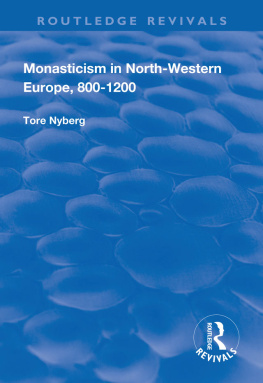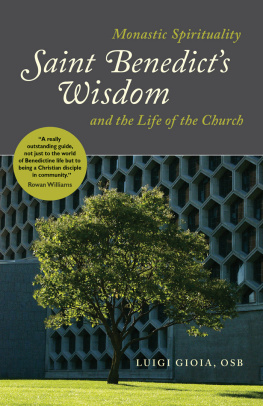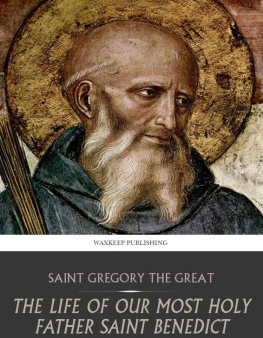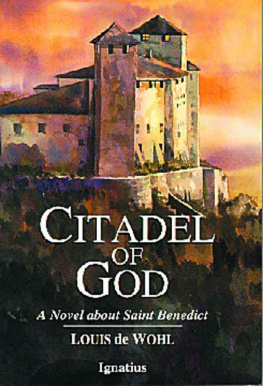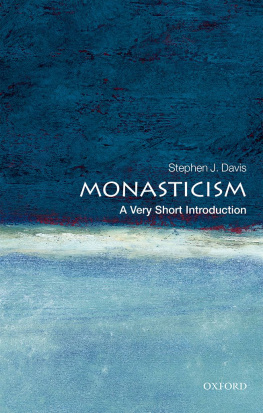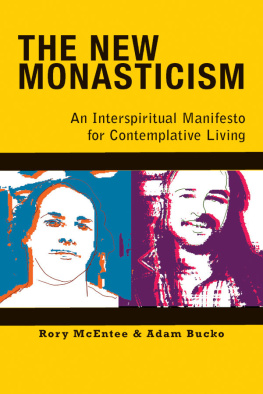Saint Antony of the Desert
Nihil Obstat
E. Thomas Bergh, O.S.B.
Censor Deputatus
Imprimatur
Edm. Can. Surmont
Vicar General
Westminster
January 28, 1924

Copyright 201 Saint Benedict Press, TAN Books.
TAN Books is an imprint of Saint Benedict Press, Charlotte, North Carolina.
This edition of Saint Antony of the Desert was retypeset from the edition published as St. Antony the Hermit by Benziger Brothers, New York, in 1924. (This classic is also known as The Life of St. Anthony .)
The Holy Rule of St. Benedict was first translated by Rev. Boniface Verheyen, OSB, in 1902. Revised Translation by William Edmund Fahey, Ph.D., in 2012.
This edition of The Twelve Degrees of Humility and Pride was retypeset from the edition published by The Macmillan Company, New York, 1929.
All rights reserved. With the exception of short excerpts used in articles and critical reviews, no part of this work may be reproduced, transmitted, or stored in any form whatsoever, printed or electronic, without the prior written permission of the publisher.
Cover Image: St. Anthony Abbot Shunning the Mass of Gold , 1430s (tempera and gold leaf on panel), Angelico, Fra (Guido di Pietro) (c.13871455). Museum of Fine Arts, Houston, Texas, USA. Edith A. and Percy S. Straus Collection. The Bridgeman Art Library.
ISBN: 978-0-89555-199-3
Printed and bound in United States of America.
10 9 8 7 6 5 4 3 2 1
www.tanbooks.com
www.saintbenedictpress.com

TAN CLASSICS
The editor dedicates this volume
with gratitude and affection to those communities
within the family of Saint Benedict, which
have shown him such generosity over the years:
The Monastery of the Holy Spirit (Conyers, Georgia)
Pluscarden Abbey (Elgin, Scotland)
Our Lady of the Assumption Monastery (Clear Creek, Oklahoma)
Saint Benedict Abbey (Still River, Massachusetts)
Hospes fui, et suscepistis me.
CONTENTS
PREFACE TO THE FOUNDATIONS OF WESTERN MONASTICISM
ASCENDING THE HEIGHTSA N INTRODUCTION TO CHRISTIAN MONASTICISM
By William Edmund Fahey, Ph.D.

T HE heart of the White Mountains lies in the Franconia Notch, near the center of New Hampshirelocation of the fabled Old Man of the Granite State. Three connected mountains offer the best views of the region: Little Haystack, Mount Lincoln, and Mount Lafayette. Each summit near or above 5,000 feet affords a distinct but related vantage point for observing the fundamental character of the Appalachian chain as it moves dramatically through New England. Which of the three mountains presents the best view is difficult to say, and although there are higher peaks and more dramatic scenery elsewhere, as an introduction to the White Mountains and the region, the three taken together remain unsurpassed.
This volume is not unlike a simple handbook introducing hikers to the Franconia region: its pages concentrate on three superlative heights, which will provide novices with an essential first viewing of Christian monasticism. St. Antony of the Desert, St. Benedict of Nursia, and St. Bernard of Clairvaux rise above other figures of Catholic history. To travel with them and to seek a view upon the heights of their personal holiness and wisdom is to secure passage into the rich and complex world of monasticism. Like an introduction to the Franconia region that focuses solely on Haystack, Lincoln, and Lafayette, and therefore not on the Pemigewasset River, the Flume George, or Boise Rock, this introduction to Christian monasticism is selective. Despite all the appeal of other features, it will remain selective so as to provide a focused exploration.
By nature, all introductions must be selective and provide a succinct guide to the key features of a subject. Again, this book provides an introduction to Christian monasticism. It speaks nothing of Hindu Sannyasa or Buddhist Sangha. It does not offer a response to the question of why Muslim culture discourages monasticism. It does not unearth the roots of monasticism in Ancient Israelwhether through the Nazirites, Essenes, or Theraputae. St. Pachomius is not allowed a place amongst the founders discussed here, nor St. Basil or St. Augustine. The exotic practices of Stylites and Dendrites, the traditions of the Copts and the ancient Irish, and much else is kept for other guides.
This guide introduces its readers to three men and three works. The Life of St. Antony , the Rule of St. Benedict , and the Twelve Degrees of Humility and Pride are offered as a simple and short path to the essence of Christian monasticism. St. Antony is presented as monasticisms foremost founder, St. Benedict as its greatest law-giver, and St. Bernard as its greatest mystic. Taken together, these men and these writings will allow the reader to ascend the heights of Christian monasticism and arrive at certain vantage points which may suggest later forays, but should suffice in themselves. The words of the editor are designed merely to provide assistance in the reading of the primary text and encouragement for future journeys.
Our words monk and monasticism are derived from a very old set of Greek words: monachos anachoretes a person who stepped aside from the rest of society. In the Hellenistic world, the concept originally applied to those who would not participate with the political system, pay taxes, or bow to social pressure. In time, the Greek expression was applied to a specific spiritual concept in the Aramaic language: ihidaya . Ihidaya described someone dedicated to spiritual perfection who elected to seek this perfection by the voluntary rejection of the common human inclinations and social customs related to the desire for wealth, power, and bodily pleasure. To be a monk, of its very nature, was and remains about both social withdrawal and spiritual perfection. Yet it is gravely mistaken to believe that the essence of monasticism was or is withdrawal or separatism. This confusion reverses the ends and the means of monasticism and contributes to the mistaken notion (held by believers, critics, and seekers) that monasticism is a rejection of the world, a scorning of life, or a sign of social and psychological vulnerability. Monasticism, as the literature will indicate, is one of the most demanding states of life in which a human can place himself, and it is a way of being whose attention and activity is ordered towards , not away from .
The silence and solitude depicted in monastic biographies and rules made a theatre for contemplation and action, not a hideaway from conflict or responsibility. If anything, responsibility and conflict came to the fore in the monastic life. It was for true freedom that monks clapped on the iron practices of obedience and restraint. The intellect and the will came under rigorous self-discipline, not because the monk rejected the world or his fellow man, but because he sought out a superlative opportunity for uniting his thoughts, words, affections, and actions to the divine will and mind of God and he sought to do so freely and with love. This required some specialized knowledge and, more importantly, considerable mental resolve, fitness and stamina, regular training, and constant struggle. It should not, therefore, come as a surprise that the language of monasticism is so richly analogous to military or athletic language. The vigor of monastic concepts and words is akin to that found in the Old Testament Prophets or the writings of St. Paul. Only a virile and heroic language could begin to approach the interior world experienced by the monks. Only an elaborate, but also agonistic, imagery could sustain the ideas monastic writers were trying to express. The literature of monasticism is at once muscular and poetic, rhetorical and systematic.
Next page

